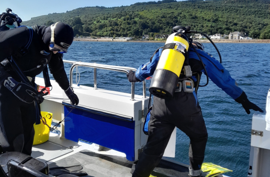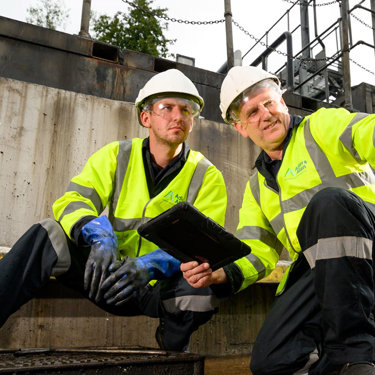What to look for in a good carbon credit in the voluntary carbon offset market
Published: 30 January 2023
A high-profile newspaper recently conducted an investigation into the voluntary carbon offset market (which grew towards $2bn in 2021) for credits related to the prevention of deforestation. Their findings suggest that up to 90% of deforestation carbon credits are ‘phantom credits’ and do not deliver the outcomes that they claim to. The company dispute this and state that the methodology used by the newspaper omits important factors.
So, who is right? Probably both. Probably neither.
Not all carbon offsets are created equal
Not all carbon offsets are created equal. There are a range of different technologies, schemes and added social benefits, matching a wide range of budgets.
When purchasing any product or service, the provider will always promote the benefits and avoid highlighting the negatives. We must be wary of this when purchasing carbon offsets of any kind and we must demand validation and good quality robust data.
But, on the other hand, studies and investigations which scrutinise carbon offsets often start out with the purpose of identifying problems and, as such, are always likely to find them. We must also take these with a pinch of salt and always scrutinise them in return.
When we buy a product online, we review its price and specification. We determine if it will meet our needs and if it is good value for money. We then scroll down and read the review section. There will be many different reviews from 5 stars down to 0 stars. There will be people with very strong views that the product was exactly what they were looking for. There will be people who hated it. Often, we only see the polarising views.
The truth is somewhere in the middle. So we make a decision based on the balance of information provided to us.
The same goes for voluntary carbon offsets. Ultimately, we must conduct our own due diligence, to a depth and standard that is appropriate for our own circumstances.
That is not to say the carbon offset providers cannot do better. The market is so complex with many types of projects using different methodologies. New carbon marketplaces and certification standards are being launched all the time, with very little governance or regulation.
Carbon offset developers and brokers need to be far more transparent with the pros and cons of projects; and simplify reports to allow the wider public to truly understand and engage with the market. There is a fine line between ‘spin’ and misleading people and offset providers need to stay on the right side of that threshold.
The publication also took the step of naming high-profile organisations that have previously purchased these credits. Regardless of whether the claims are holistically true, the damage to those brands is already done. Social media allows stories to spread fast before a business has an opportunity to respond. That is why it is so important that organisations ensure they are choosing the right offset provider, with documented evidence on why projects have been chosen.
How to identify a high-quality carbon credit
But how do you know if a carbon credit is of high quality and delivering what it promises?
- Additionality – Would the project have been developed without carbon finance (i.e. a wind farm that was already commercially viable)? If so, the offset is unlikely to offer additional carbon saving as required by an offset.
- Certification – In theory, anyone can set up a certification scheme and begin to certify projects against a set of criteria. Is the certification standard well established or new? Does it cover the aspects that are important to you and your organisation? Is the methodology open and transparent?
- Inflated baselines – In the case of deforestation projects, how likely is it that those trees would have been cut down? And is the carbon that could be potentially released over-exaggerated?
- Leakage – Leakage in carbon offset terms is when you avoid deforestation in one area only for more deforestation to happen elsewhere. While it is difficult for a project developer to fully control this, there are measures they can employ to mitigate it.
- Validation – To what extent are projects monitored and validated?
- Project vintage - How old is the project? Was it developed under older standards with less stringent criteria? If the project is several years old and has not sold many credits, why is this the case?
- Longevity – Does the project only delivery short-term carbon savings, or is there a robust long-term strategy in place?
- Social benefits – Many social benefits are vague and intangible despite being mapped against UK Sustainable Development Goals. Are social benefits actually measured and verified in the same way as carbon?
- Location risk – Is the project located in a region that has seen political unrest or where there are concerns over human rights?
- Reputational risk – Has the project received any negative press coverage such as worker deaths or the displacement of people?
- Investment – How much of the project fee goes to the project developer and social initiatives, and how much is taken by the energy broker?
- Cost-effectiveness – Are you getting good value for money for a good quality of offset?
As independent environmental consultants, we can support your organisation to risk-assess carbon offset solutions to mitigate against environmental and reputational risk.
More from our Knowledge Hub
 News
NewsAdler & Allan announces new investment from Private Equity at Goldman Sachs Alternatives
 Insights
InsightsDemystifying the new biodiversity net gain legislation
 Case study
Case studyBlue carbon habitat suitability assessments in Scotland as part of Carbon Neutral Islands project
 Insights
InsightsChanges to ESOS reporting system and compliance notification deadline extended to 6 August 2024
Keep your business compliant and protect the environment while reducing the risk of operational downtime
Find out how Adler and Allan reduce your risk and support you on your journey to Net-Zero through the management and maintenance of assets.
Contact our experts

